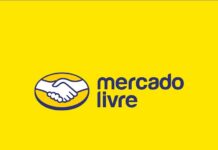Andrew Manly
The AIPIA World Congress 2023 was once again located in the iconic Beurs van Berlage building in central Amsterdam, this time running alongside the Sustainable Packaging Summit organised by Packaging Europe. So, it was not surprising that a strong undertone of this year’s event was Smart Packaging’s involvement and impact on the world of sustainability. But, as AIPIA managing director Eef de Ferrante, said in his welcome “There is so much more to Smart packaging than a role in sustainability.” This was certainly evident in both the innovative range of topics presented and the smart technologies on show in the exhibition area.
Appropriately the Congress proceedings kicked off with a highly motivational keynote by Marcin Ratajczak of Berlin-based Inuru. The company has developed a range of labels and other devices using printed OLED (Organic Light Emitting Diode) technology. With all Inuru staff sporting jackets with OLED features, lighting up patches as they moved, they were perhaps the best advertisement for this ingenious combination of hybrid and printed electronics, literally shining a light on it!
Marcin explained that the company has already worked with several major brands, including Coca Cola and champagne house CATTIER. He announced that the technology was now at a stage where it can be mass produced cost effectively and will commence operations at scale in early 2024.
This will open up a whole range of new possibilities, particularly as other features, such as expiry/timer displays can now be added.

Connected packs are the future
On the Smart Insights stage Simon Jones of Antares Vision Systems made a bold statement ‘Playtime is Over’, the intelligent packaging market will be worth $13 billion by 2027 and the digitisation of packaging is inevitable and will have a major impact on corporate revenues. He explained that his reasoning was driven by the need for data at every level and that packaging suppliers can be empowered to become major suppliers of that data. There is a need to create ‘trustparency’ in supply chains and technologies, such as the Antares DIAMIND, to deliver end to end transparency. No more focus group guesswork and a clear message from 90% of packaging suppliers that connected packaging will improve their sustainability credentials. The challenge, he believes, is getting them to act more urgently on this information.
Reinforcing these messages were several companies in the Internet of Things, IoT, space, with Ambient IoT being the latest buzz. Steve Statler of Wiliot led the charge. His presentation covered the latest ambient standards and how these ecosystems, involving 5G and 6G bring a ‘formidable set of new vendors, functionality and marketing dollars’ to the table. He explained that battery free tags and the power of the cloud and AI can bring the IoT to billions of connected packages.
These messages were echoed later in the Congress by Klaus Simonmeyer of Identiv who focused on how IoT connected packs can benefit more sensitive sectors such as healthcare and pharma. He announced that a ‘next generation’ set of IoT Pixels are set to be launched in the second half of 2024, which use less power and have the ability to harvest power from ambient light. The company has also developed a new IoT platform, bitse.io
Success or failure?
A relatively new feature of the Congress are panel discussions to address some more strategic topics. One of these covered Smart Packaging and Sustainability – FMCG insights into what technologies will or won’t succeed. The discussion was led by Time Sykes of PE and featured Amy King and James Harmer of Brand product & packaging design and innovation consulting group Cambridge Design Partnership. The discussion centred around whether FMCG companies are ready to implement Smart packaging at scale or whether they still need convincing there is a good ROI proposition. They asked the question: Is the smart packaging sector pushing the right technologies and suggested some of the Brand priorities have shifted.
In particular they highlighted supply chain issues and anti-counterfeiting as key concerns and that brands were looking for better, smaller, cheaper on pack sensors, energy harvesting features as well as new materials as well as the need to leverage smartphone devices for direct consumer contact. The sustainability element is also important, for example Holy grail 2.0, but that is not a consumer facing project.
In a period of change and flux it might be hard to identify the right tech to support, some enabling smart features are still under development, speculated King. But large infrastructure changes will not happen quickly, it will be smaller, incremental changes which can succeed. Consumers have a role to play, particularly in things like food waste prevention, recycle and reuse systems. But they have now been told ‘plastics is bad’ for so long there needs to be a new narrative. And do they always make sustainable choices at the point of purchase.
In the end they concluded Brands want one solution which covers a range of requirements (such as track & trace, authentication, tamper evidence, etc.) ‘You cannot put two QR codes on one pack,’ said Harmer. So smart packaging providers need to collaborate to create a joined-up ecosystem – a theme which occurred throughout the Congress. Finally, they see big opportunities in healthcare where legislation and new issues such as compliance are driving packaging outcomes.
Accessible QR codes
Back on the Smart Futures stage in the main hall another panel covered ‘Making packaging fully accessible for the first time – courtesy of the Accessible QR code’ and featured Sarah Maters, digital & ecommerce director at Unilever who was joined by Mark Powell of the Royal National Institute for the Blind, Caspar Thykier CEO of Zappar, and Mark Hewitt of Connected Experience Consulting. Masters explained that making their products accessible to everyone in society is not just an important element in Unilever’s diversity and inclusion commitments it also makes good commercial sense. The discussion centred around the development of this QR innovation and how it has made the Persil brand of homecare products is now fully accessible for the first time
The panel shared information on the positive impact it is having on the Brand and how these and other types of smart accessibility features have a bright future. As ever a stumbling block is the lack of knowledge about these – as well as other – on pack connective features and how it is the responsibility of all the stakeholders to educate those who can benefit from them. The word Education featured in a number of presentations as a key factor in the implementation and popularisation of connected packaging.
New faces
Three companies new to the Congress exhibition space were Zebra Technologies and Crane Authentication and OMRON. All three delivered highly informative keynotes on different aspects of mart packaging. OMRON’s Patricia Torres asked a question which was very relevant to the proceedings: Is your packaging smart enough for circularity? She went on to explain how the latest technologies in automation, robotics and vision systems are re-shaping the journey of packaging along the value chain to deliver circularity.
Elaine Wilkinson of Zebra Technologies explained how the company is harnessing environmental sensors and indicators for intelligent packaging across the supply chain. She and her colleague Rob Pick believe such devices can be game changers across a number of different industries. The presentation explored how these sensors are enhancing product safety, extending shelf life and enabling real time monitoring, while at the same time meeting regulatory requirements, consumer preferences and the needs for sustainable solutions.
Crane Authentication is part of a group that has been safeguarding the world’s paper currencies for many years with clever holographic and printing technologies. The company’s Authentic by Design™. is now leveraging this technology to offer brands the opportunity to use designs with both overt and covert counterfeit-proof elements and engaging visual effects that reinforce a brand’s identity as well as providing defence against counterfeiting. The feature is integrated into product packaging for enabling intuitive authentication and brand enhancement it says. The customized labels and packaging drive consumer engagement, with impactful 3D and fluid movement effects which help prevent counterfeiting.
Another new face this year was Domino Printing Sciences. Craig Stobie the company’s director of global strategic sectors followed the evolution in product identification and traceability. He focused on the activity around the roll out of the GS1 Digital Link and was one of several speakers to stress the importance of this Link as a standardise approach to coding which will have a profound impact globally as 2D barcodes are adopted on billions of products in supply chains.
He stressed that it is vital to look at the practicalities of how to produce these codes at speed and how this can offer the opportunity for late-stage customization in-house and inline/near line to reap the benefits of being able to adapt production lines for short runs, with no pre-printing required. The company is fully committed to providing equipment and technology to help apply intelligence to smart packaging he stated.



















